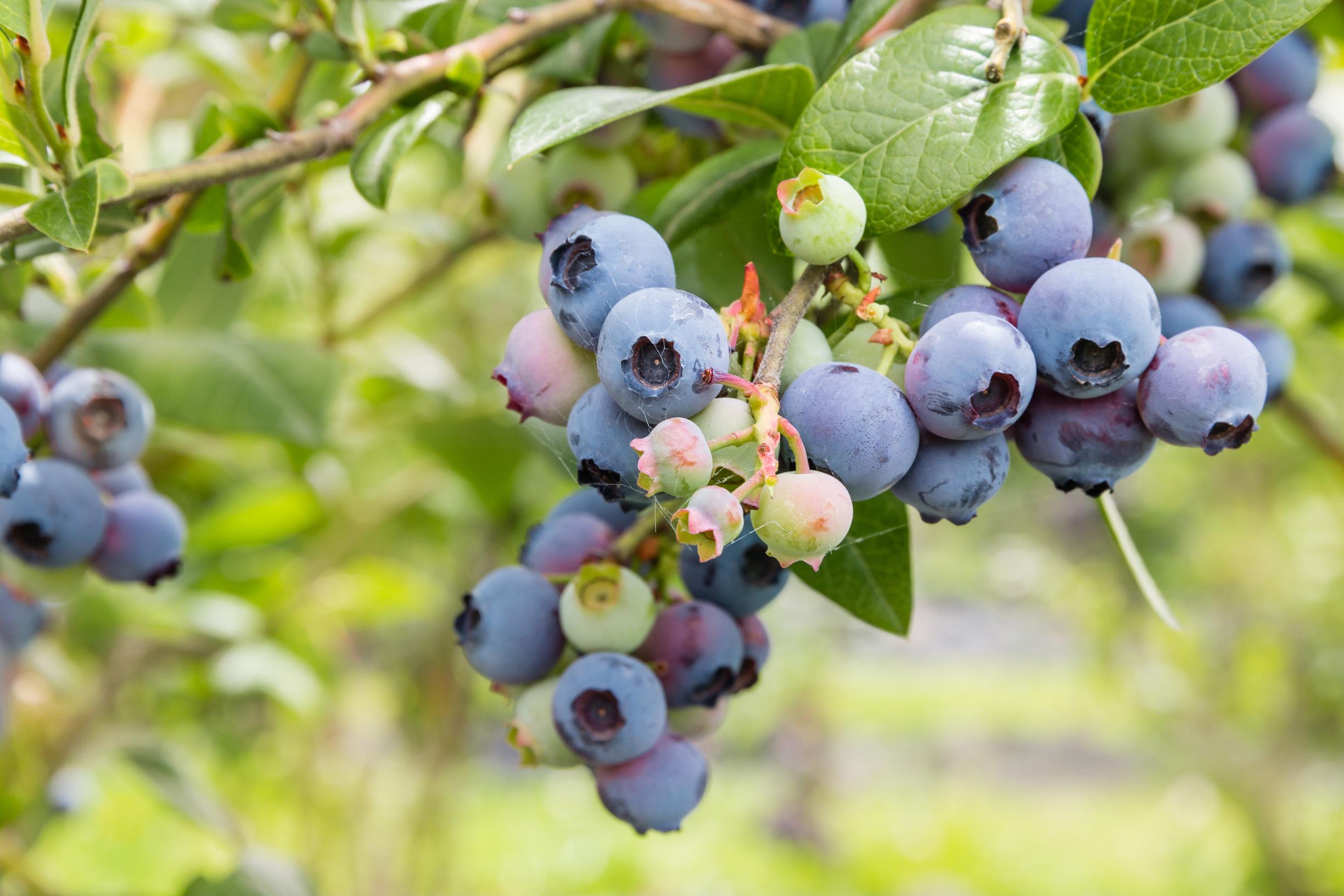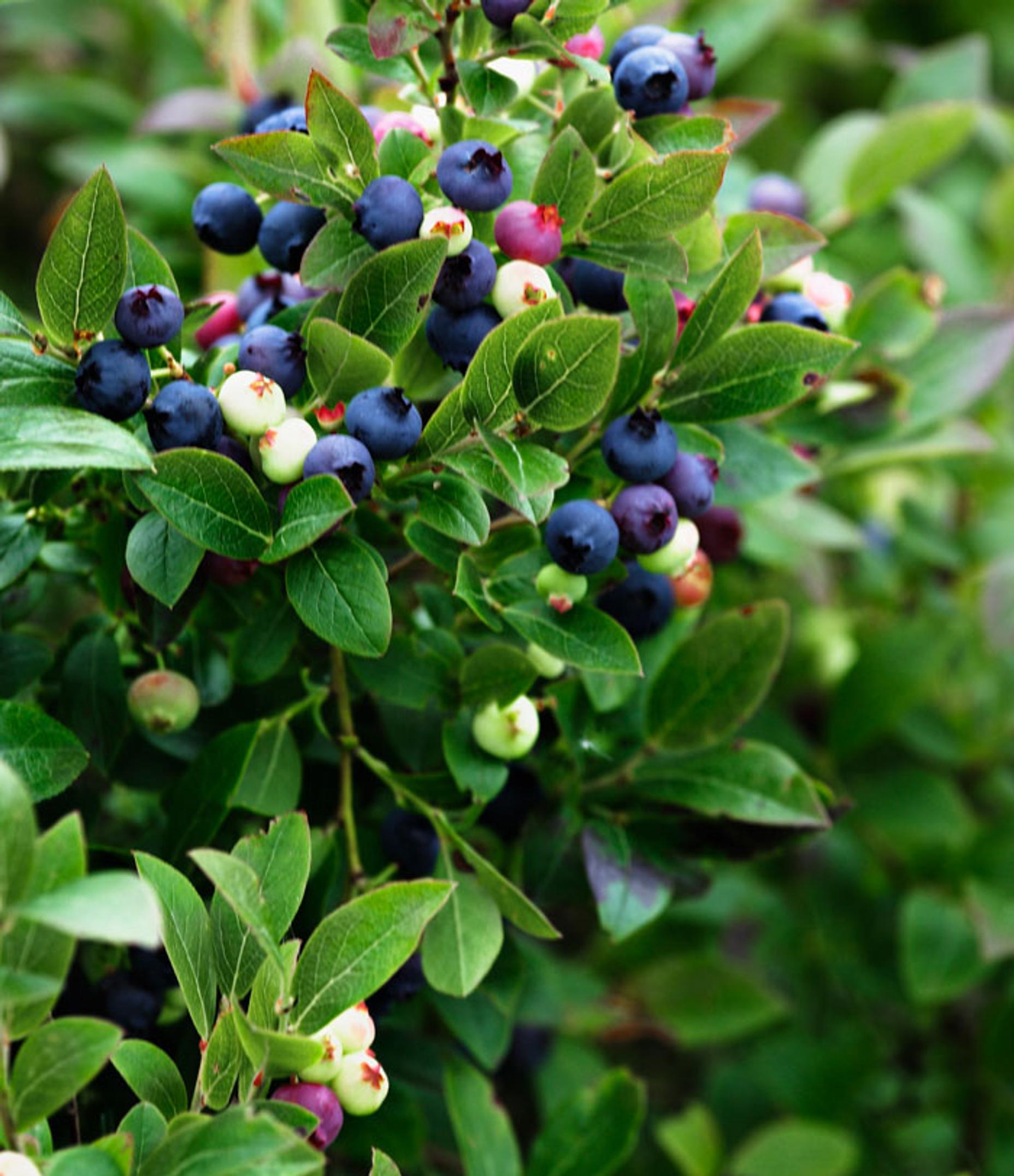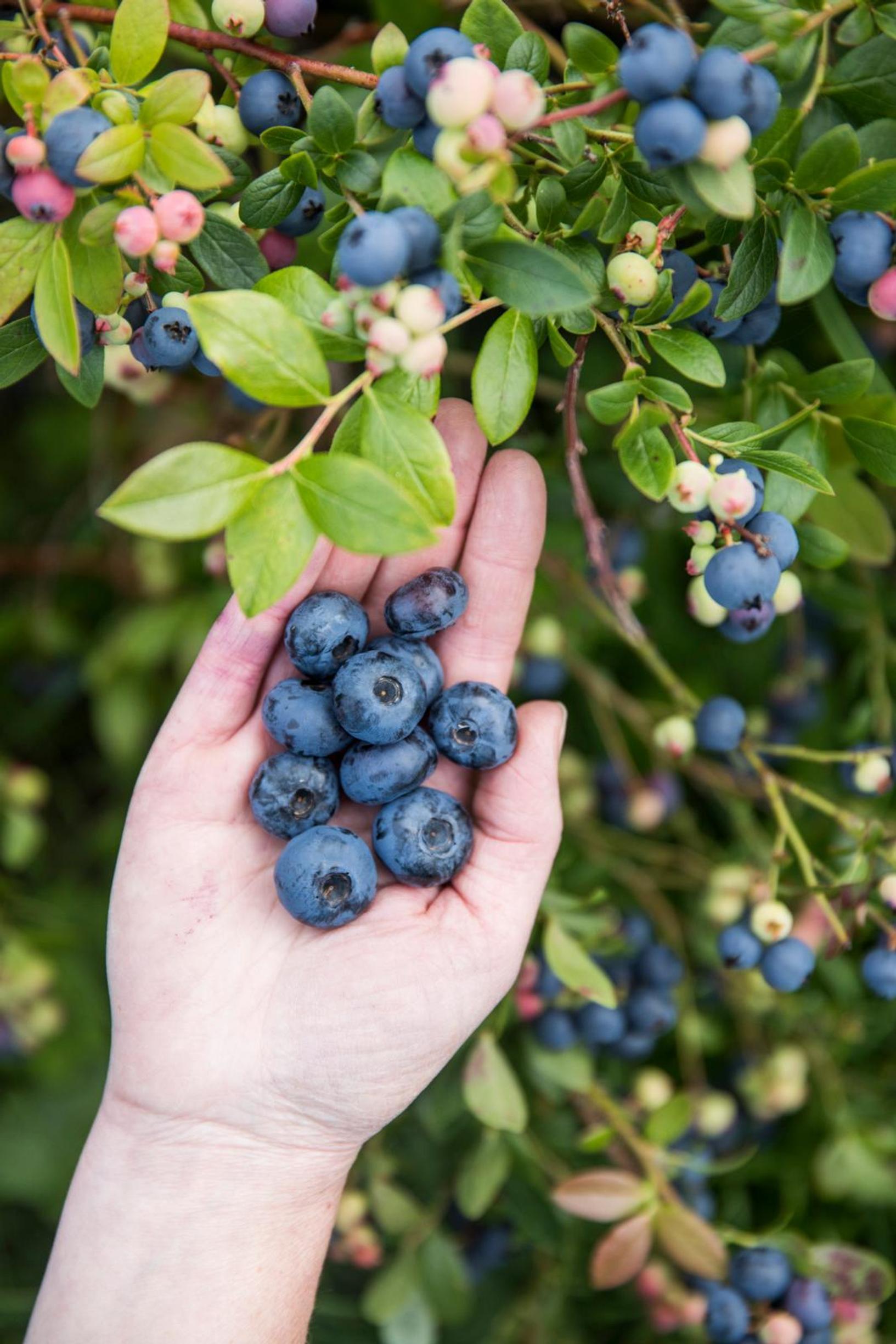
How to plant and grow highbush blueberries
Highbush blueberries entice with their delicious berries, diverse cultivars, and ease of harvesting: picking blueberries becomes easier when you can harvest them in your own garden. With proper care, highbush blueberries can produce berries for 20–30 years.
Growing location and soil for highbush blueberries
Highbush blueberries are particular about their growing location and soil [in Finnish]. However, if these meet the requirements of the plant, the bush will thrive with little care. The best growing location for highbush blueberries is sunny and sheltered from the wind.
Highbush blueberries prefer humus-rich, loose mineral soil. The soil pH should be between 4.5 and 5.2. Growth slows down and the foliage may turn yellow if the pH is higher than 5.5.
Planting highbush blueberries
Plant highbush blueberries on a mound, as their shallow root system does not tolerate waterlogging. Highbush blueberries rows should be 1.5–3 meters apart and the plants itself 0.75–1 meter apart.
Acidify the garden soil by mixing in forest soil and peat intended for conifers. For initial fertilization, use autumn fertilizer or mature compost.

Watering highbush blueberries
Highbush blueberries have shallow roots and need consistent moisture. Especially during the fruit development stage, it’s important to ensure adequate moisture, as unripe berries can easily drop if the soil dries out.
Water highbush blueberries weekly during dry periods. In hot weather, the shallow-rooted plants may need watering 2–3 times a week. Once the harvest is over, stop watering. Allow the soil to dry out in early autumn.
Pruning highbush blueberries
The bushes require minimal pruning. In spring, remove only the dried shoot tips. This suffices for the first ten years. After that, you can remove two or three old, worn-out stems. Allow healthy, older stems to grow, as they are the ones that overwinter best and provide a good harvest.
Caring for highbush blueberries
Mulch the soil with landscaping fabric, wood chips, leaf compost, acidic peat, or litter to keep the soil moist and acidic. The mulch also prevents weeds from growing. Add mulch around the base of the highbush blueberries annually. Enlarge the opening cut in the fabric as needed, or new shoots will slip under the mulch.
Fertilize highbush blueberries in the spring with rhododendron fertilizer or compost. If the highbush blueberry blooms abundantly, give it additional fertilizer after flowering. Mixing the fertilizer into water and watering after applying granules accelerates the dissolution of nutrients.
Propagating highbush blueberries
Propagate highbush blueberries by layering. Bend a stem to the ground and cover the middle part with soil. Place a hook or stone on it to weigh it down. Detach the new plant after about a year. Propagation is also possible with winter cuttings, but they root slowly.
Diseases and pests of highbush blueberries
Tall and semi-tall highbush blueberries are susceptible to blueberry canker. This disease is characterized by wilting, darkening shoots that appear on the bush in the summer. They should be pruned immediately and destroyed to prevent the spread of the disease.
Pests do not give highbush blueberries trouble, but you should protect the stems in winter with nets against hares and voles. Covering the ground under the bush is also a good way to protect it. Birds enjoy the berries even when they are unripe.

Harvesting highbush blueberries
Pick the berries only three days after they have developed the typical color for the variety. The berries of most varieties ripen over 2–3 weeks. A large harvest increases the need for nutrients. In the fruit-bearing age, an appropriate amount is about one tablespoon of potato or rhododendron fertilizer. A teaspoon is enough for a young plant.
Highbush blueberry varieties
There are low, semi-tall, and tall varieties of highbush blueberries available. Low-growing varieties spread via underground stems, making them good ground cover plants. Thanks to their gorgeous red autumn foliage, highbush blueberries are also impressive ornamental plants. FinE, or Finnish Elite, is a certification that lets you know the variety is proven to be of high quality, hardy and fit for its purpose. As for the Finnish plant hardiness zones in the list below, you can learn more about them in this article.
‘Aino’ (FinE)
- Breeding origin: Finland
- Berry: Large, mild, sweet, aromatic.
- Shrub: 80–90 cm tall, over a meter wide, ‘Alvar’ is a suitable pollinator.
- Yield: 1.6 kg/shrub, early August.
- Finnish hardiness zone: IV (V)
‘Alvar’ (FinE)
- Breeding origin: Finland
- Berry: Large, dark blue, sweet, very tasty.
- Shrub: 105 cm tall, ‘Aino’ is a suitable pollinator.
- Yield: 2 kg/shrub, early August.
- Finnish hardiness zone: IV (V)
‘Arne’
- Breeding origin: Finland
- Berry: Large, light blue, sweet, mild, very tasty.
- Shrub: 120 cm tall.
- Yield: 2 kg/shrub, early August.
- Finnish Hardiness zone: III
‘Chippewa’
- Breeding origin: USA
- Berry: Very large, sweet, aromatic.
- Shrub: 70–100 cm tall.
- Yield: 2–3 kg/shrub, ‘North Blue’ is a suitable pollinator.
- Finnish Hardiness zone: IV
‘Hele’
- Breeding origin: Finland
- Berry: Small, sweet, mild, waxy, light blue.
- Shrub: Creeping growth habit, 20–50 cm tall.
- Yield: 0.5–1 kg/shrub, in late July.
- Finnish Hardiness zone: V
‘North Blue’
- Breeding origin: USA
- Berry: Very large, flattened shape, matte, sweet, tangy.
- Shrub: 70–90 cm tall; ‘North Country’ is a suitable pollinator.
- Yield: 2 kg/shrub, in mid-August.
- Finnish Hardiness zone: IV
‘North Country’
- Breeding origin: USA
- Berry: Medium-sized, light blue, slightly sweet, aromatic.
- Shrub: 45–60 cm tall, dark leaves, stunning autumn color.
- Yield: 1 kg/shrub, in mid-August.
- Finnish Hardiness zone: V
‘Northsky’
- Breeding origin: USA
- Berry: Rather small, blue, sweet, aromatic; reminiscent of the Canadian wild blueberry.
- Shrub: 30–45 cm tall, compact, white flowers, glossy leaves.
- Yield: 0.5 kg/shrub.
- Finnish Hardiness zone: V (VI)
‘Siro’
- Breeding origin: Finland
- Berry: Medium-sized, nearly black, sweet, mild.
- Shrub: 70 cm tall.
- Yield: 1.5 kg/shrub, in early August.
- Finnish Hardiness zone: III (IV)
In addition, there are many new highbush blueberry cultivars suited to Finnish conditions, and we will acquire more information about their hardiness as we get more cultivation experience:
- ‘Arto’ (FinE): The berry is large, acidic, and aromatic. Late season. Height about 1.3 m. I–II(III).
- ‘Jorma’ (FinE): A new Finnish variety. The berry is medium-sized and mild in flavor. Vigorous growth and high yield. Beautiful autumn color. Height about 1.5 m. Promising winter hardiness.
- ‘Saani’ (FinE): The berry is about the size of a wild forest blueberry. Abundant yield. Under 0.6 m tall. Good pollinator. Recommended for northern Finland. I–IV(V).
- ‘Sine’ (FinE): High yield. Height 0.6–1 m. Versatile, multipurpose plant. I–IV.


